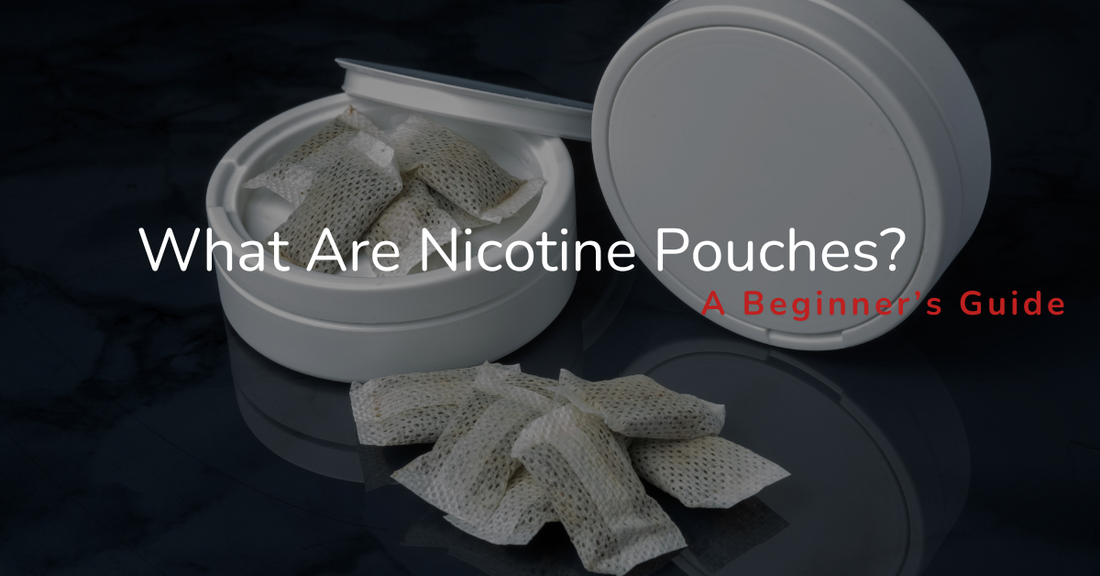
What Are Nicotine Pouches? A Beginner’s Guide
The landscape of nicotine consumption has evolved dramatically over the past decade, with new products emerging as alternatives to traditional cigarettes. Among these innovations, nicotine pouches have gained significant attention as a smokeless and seemingly discreet way to consume nicotine.
But what exactly are these products, and what should consumers know before trying them?
Understanding Nicotine Pouches
Nicotine pouches are small, white pouches that contain nicotine along with other ingredients but no tobacco leaf. These products are designed to be placed between the upper lip and gum, where they slowly release nicotine that is absorbed through the oral tissues. Unlike traditional smokeless tobacco products like chewing tobacco or snuff, these pouches don't require spitting, making them more socially acceptable in many situations.
The concept behind nicotine pouches represents a significant shift in how nicotine products are formulated and consumed. Manufacturers have created these products as tobacco free nicotine pouches, meaning they contain synthetic or extracted nicotine without the harmful tobacco plant material typically associated with traditional tobacco products.
How Nicotine Pouches Work
When a user places a nicotine pouch between their lip and gum, the moisture in their mouth activates the contents. The nicotine is then gradually released and absorbed through the mucous membranes in the mouth, providing a steady delivery of nicotine to the bloodstream. This process typically takes 20-30 minutes, after which the pouch can be discarded.
The delivery method is similar to other oral nicotine replacement products like nicotine gum or lozenges, but with a more discreet presentation. Users don't need to chew or suck on anything, and the pouches are virtually invisible when in use.
Composition and Ingredients
Non tobacco nicotine pouches contain several key ingredients that work together to deliver nicotine effectively. The primary components include nicotine (either synthetic or extracted from tobacco), plant-based fibers that form the pouch structure, flavorings to enhance taste, sweeteners to improve palatability, and pH adjusters to optimize nicotine absorption.
The plant-based fibers are typically derived from eucalyptus or pine, creating a soft, porous material that allows for controlled nicotine release. These fibers are food-grade and designed to be safe for oral contact. The nicotine content varies by product and brand, typically ranging from 2mg to 6mg per pouch, though some products contain even higher concentrations.
Popular brands include ZYN, Killa, Velo, On!, and Nordic Spirit, each offering different flavors and nicotine strengths. The flavoring options are extensive, ranging from mint and citrus to more exotic options like coffee or tropical fruits.
The Appeal and Marketing
The marketing of nicotine pouches often emphasizes their convenience and discretion. Unlike cigarettes, they produce no smoke, odor, or visible vapor. Unlike traditional smokeless tobacco, they don't require spitting or create the telltale bulge in the user's cheek. This has made them particularly appealing to people who want to consume nicotine in settings where smoking isn't permitted or socially acceptable.
The packaging is often sleek and modern, resembling breath mints or similar consumer products rather than traditional tobacco packaging. This aesthetic choice has contributed to their popularity, particularly among younger demographics who may be attracted to the contemporary design and variety of flavors.
Potential Benefits for Smokers
For current smokers, nicotine pouches may offer certain advantages over continued cigarette use.
Johns Hopkins researchers note that "for smokers who haven't had nicotine for a set period of time and are craving nicotine, the pouches do seem to dampen those cravings."
Because they don't involve combustion, nicotine pouches don't expose users to the tar and many of the carcinogenic compounds found in cigarette smoke. They also don't produce secondhand smoke, eliminating exposure risks for others nearby.
However, it's crucial to understand that nicotine pouches are not FDA-approved smoking cessation products. The FDA has approved specific medications and therapies for smoking cessation, and anyone serious about quitting smoking should consult with healthcare providers about proven cessation methods.
Questions About Long-term Effects
When people ask "are nicotine pouches bad for you", the honest answer is that long-term health effects are still being studied. These products are relatively new, having gained popularity only in recent years. While they appear to be less harmful than smoking cigarettes, this doesn't mean they are harmless.
Research is ongoing to understand the potential long-term oral health effects, cardiovascular impacts, and addiction potential.
Making Informed Decisions
For current smokers, nicotine pouches might represent a harm reduction option, but they should be considered as part of a comprehensive quit plan. Consulting with healthcare providers about FDA-approved cessation methods remains the gold standard for smoking cessation.
Understanding proper usage is important. This includes not exceeding recommended dosages and monitoring for oral health changes.
The Future of Nicotine Pouches
As research continues and regulatory frameworks develop, our understanding of nicotine pouches will undoubtedly evolve. The tobacco and nicotine industry continues to innovate, and these products represent just one example of how nicotine delivery methods are changing.
Public health officials continue to study usage patterns, health effects, and the role these products might play in overall tobacco harm reduction strategies. The challenge lies in balancing potential benefits for current smokers with the risk of creating new nicotine users, particularly among young people.
Nicotine pouches represent a significant innovation in nicotine delivery, offering a smokeless, tobacco-free alternative to traditional tobacco products. They may present a lower-risk option for current smokers compared to continued cigarette use.

